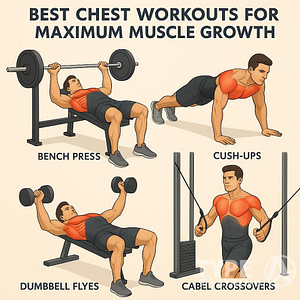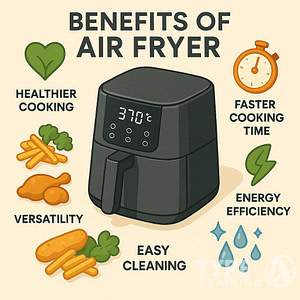Many seniors struggle to maintain an active lifestyle. An In Home Personal Trainer for Seniors can bridge that gap and provide tailored support.
Working with an In Home Personal Trainer for Seniors not only ensures safety but also builds confidence in your abilities.
Working with an In Home Personal Trainer for Seniors provides a safe, effective, and personalized approach to fitness. It adapts to your specific needs, health conditions, and mobility levels.
Having an In Home Personal Trainer for Seniors means you can stay motivated in your own environment.
Popular posts:
Having an In Home Personal Trainer for Seniors means you benefit from personalized attention and a customized workout plan.
Investing in an In Home Personal Trainer for Seniors can lead to significant improvements in physical health.
Senior-focused personal trainers understand the unique challenges of aging bodies. They can design customized workout plans that target your specific goals. These goals can include improving balance, building strength, or enhancing flexibility.
A personal In Home Personal Trainer for Seniors adapts workouts based on your progress.
The convenience of having a trainer come to your home eliminates transportation barriers and creates a comfortable environment for exercise.
With an In Home Personal Trainer for Seniors, you can focus on achieving your personal fitness goals.
Safety remains a top priority during senior fitness activities. Having a qualified trainer monitor your form and technique reduces injury risks while maximizing the benefits of each exercise session.
Having an experienced In Home Personal Trainer for Seniors by your side ensures proper exercise techniques.
Key Takeaways
- In-home personal training provides safe, supervised exercise tailored to your individual needs and limitations
- Regular sessions with a trainer improve physical fitness while maintaining proper form and technique
- Personal training at home eliminates transportation barriers and creates a comfortable environment for consistent exercise
The Importance of Physical Fitness for Seniors
Regular physical activity is essential for seniors. An In Home Personal Trainer for Seniors can help you stay fit and active, improving overall health and wellness.
Your In Home Personal Trainer for Seniors can help create a supportive environment for exercise.
Benefits of Regular Exercise
Many seniors find that an In Home Personal Trainer for Seniors helps them stay engaged in their fitness journey.
Physical activity strengthens your cardiovascular health and reduces the risk of heart disease. Exercise also helps maintain healthy
Regular movement increases bone density, reducing your risk of osteoporosis and fractures. Weight-bearing exercises strengthen muscles that support your joints, helping to manage arthritis pain.
Exercise releases endorphins that combat depression and anxiety. Your mental sharpness improves through increased blood flow to the brain.
Physical activity enhances your immune system and helps manage diabetes through better blood sugar control.
Challenges in Senior Fitness
Overcoming challenges is easier with an In Home Personal Trainer for Seniors to guide you through.
Many seniors face obstacles when starting an exercise routine. Balance issues and fear of falling can limit your confidence in trying new activities.
Safety remains a primary concern when exercising independently. Limited mobility or joint pain may make certain movements difficult.
Existing health conditions like hypertension require careful monitoring during exercise. You might feel uncertain about which exercises are safe and effective for your specific situation.
Starting an exercise program can feel overwhelming without proper guidance. Many seniors struggle to maintain proper form and technique when exercising alone.
The Role of Personal Trainers in Senior Exercise Programs
Engaging an In Home Personal Trainer for Seniors can help break down complex fitness goals into manageable steps.
Personal trainers for seniors provide expert guidance to create safe, effective, and personalized fitness programs that address specific health needs and mobility goals.
Advantages of Hiring a Personal Trainer
Certified personal trainers design workouts tailored to your unique physical condition and limitations. They monitor your form and technique to prevent injuries during exercises.
A trainer helps you maintain proper posture and breathing patterns while exercising. This expertise becomes crucial when managing chronic conditions like arthritis or recovering from surgery.
Your trainer will track your progress and adjust the exercise program as your strength and mobility improve. They provide motivation and accountability, making it more likely for you to stick to your fitness routine.
Selecting the Right Trainer
Look for trainers with specific certifications in senior fitness and experience working with older adults. The right trainer should understand age-related conditions and how to modify exercises accordingly.
Ask potential trainers about their approach to age-appropriate exercises and fall prevention techniques. They should be able to demonstrate experience with balance training and strength-building exercises suitable for seniors.
Choose someone who communicates clearly and patiently. Your trainer should regularly assess your comfort level and be willing to adjust the intensity of workouts based on your feedback.
Designing an Effective In-Home Training Regimen
With the right In Home Personal Trainer for Seniors, you can achieve a balanced and effective workout.
A well-designed in-home fitness program combines essential exercises that target your specific needs while ensuring safety and progression in your own comfortable space.
Components of a Balanced Workout
Regular sessions with an In Home Personal Trainer for Seniors ensure personalized workout plans.
Personal trainers for seniors create structured workouts that include multiple key elements.
Many benefits arise from working with an In Home Personal Trainer for Seniors focused on your needs.
Start with 5-10 minutes of light cardiovascular warm-up like marching in place or gentle arm circles.
Include 15-20 minutes of strength training exercises targeting major muscle groups. Focus on bodyweight movements or light dumbbells for exercises like chair squats, wall pushups, and standing rows.
Dedicate 10-15 minutes to balance exercises such as single-leg stands, heel-to-toe walks, and supported lunges. These movements help prevent falls and improve stability.
End with flexibility work through gentle stretches for your shoulders, hips, and legs. Hold each stretch for 15-30 seconds without bouncing.
Addressing Individual Needs and Conditions
Your In Home Personal Trainer for Seniors will provide individualized attention to help you achieve your goals.
Your customized workout plan must account for any existing health conditions, mobility limitations, or physical challenges you face.
If you have arthritis, your trainer will modify exercises to reduce joint stress while maintaining effectiveness. This might include seated versions of traditional standing exercises.
For those with balance concerns, exercises can be performed near a sturdy chair or wall for support. Your trainer will gradually decrease support as your confidence grows.
Functional mobility exercises should mimic daily activities like getting up from a chair or reaching overhead to build practical strength.
Monitor your breathing and exertion levels throughout each session. Your trainer will adjust intensity based on your responses and energy levels.
Psychological and Cognitive Benefits of Exercise for Seniors
Engaging in regular exercise with an In Home Personal Trainer for Seniors promotes better mental health.
Regular physical activity delivers powerful mental health benefits for older adults, from lifting mood to sharpening memory and focus. Working with a personal trainer maximizes these advantages through proper form and consistent engagement.
Exercise to Combat Depression and Anxiety
Physical activity triggers the release of endorphins and serotonin in your brain, naturally fighting feelings of depression and anxiety. A personal trainer helps you maintain consistency with encouraging accountability.
Getting active for just 30 minutes can provide an immediate mood boost. Your trainer will help design activities that you genuinely enjoy, making it easier to stick with the program.
Exercise also gives you a sense of accomplishment and control over your wellbeing. Meeting fitness goals, even small ones, builds confidence and self-esteem.
Improving Cognitive Function Through Physical Activity
Regular exercise significantly enhances cognitive performance in older adults, particularly when done 5-7 times per week. Your trainer can structure workouts to maximize these brain-boosting benefits.
Mind-body exercises like tai chi and yoga show notable improvements in memory, executive function, and language skills. A trainer ensures proper form for these specialized movements.
Physical activity increases blood flow to your brain and stimulates the growth of new neural connections. Even light exercise helps maintain mental sharpness and processing speed.
Your trainer can adjust workout intensity and complexity as your fitness improves. This provides ongoing cognitive challenges that keep your mind engaged.
Maintaining Accountability and Motivation
Having an In Home Personal Trainer for Seniors fosters accountability and helps maintain consistency.
Working with an in-home personal trainer helps seniors stay accountable to their fitness commitments and maintain long-term motivation. Regular support and guidance create a strong foundation for achieving health and wellness goals.
Setting Realistic Goals
A personal trainer helps you establish clear, measurable fitness objectives tailored to your current abilities and lifestyle. Your trainer will track your progress through specific metrics like strength gains, flexibility improvements, and endurance levels.
Through collaboration with an In Home Personal Trainer for Seniors, you can establish a routine that fits your lifestyle.
Breaking larger fitness goals into smaller, achievable milestones prevents overwhelm and builds confidence. Each accomplishment serves as motivation for the next challenge.
Key Goal-Setting Components:
- Weekly progress check-ins
- Adjustable targets based on performance
- Celebration of small victories
- Documentation of improvements
The Value of Consistency and Persistence
Regular exercise sessions with a trainer create structure and routine in your fitness journey. Your trainer schedules workouts at convenient times, making it easier to stick to your exercise commitments.
Having someone waiting at your door eliminates common excuses and barriers to exercise. The trainer’s presence ensures you complete each session effectively.
Benefits of Consistent Training:
- Established exercise habits
- Regular progress monitoring
- Sustained motivation through challenging periods
- Accountability partnerships that foster success
Professional guidance helps you push through plateaus. It also helps maintain safe and appropriate exercise intensity for your fitness level.
Maintaining Consistency With Online Training
Online training sessions with an In Home Personal Trainer for Seniors offer flexibility and convenience.
Online sessions with a personal trainer make regular exercise more manageable. Digital platforms make it easy to maintain your workout schedule from the comfort of your home.
Your virtual trainer can track your progress and adjust your exercise routine as needed. They’ll also provide real-time feedback and corrections to ensure you’re performing movements safely and effectively.
Key Benefits of Online Training:
-
- Flexible scheduling that fits your daily routine
- No travel time or transportation concerns
Your In Home Personal Trainer for Seniors can assist in maintaining focus during online workouts.
- Regular check-ins to keep you accountable
- Digital workout tracking and progress monitoring
- Immediate access to exercise demonstrations
Video calls and fitness apps help you stay connected with your trainer between sessions. You can review exercise techniques, track your achievements, and maintain motivation throughout your fitness journey.
Setting up reminders and notifications on your devices helps establish a consistent workout routine. Your trainer can help you create a schedule that aligns with your energy levels and daily activities.
Tips for Success:
- Schedule workouts at the same time each day
- Keep your exercise equipment organized and accessible
- Document your progress in a digital fitness journal
- Communicate regularly with your trainer about challenges or concerns
Frequently Asked Questions
Many seniors find the support of an In Home Personal Trainer for Seniors invaluable in their fitness journeys.
Seniors benefit from customized fitness programs delivered by certified trainers who understand age-specific exercise requirements and safety protocols. A personal trainer provides individualized attention, proper form correction, and adaptive workouts tailored to each client’s abilities and goals.
Why Choose an In Home Personal Trainer for Seniors?
Choosing an In Home Personal Trainer for Seniors allows for a customized approach to fitness.
Safety and comfort in familiar surroundings allow you to focus fully on your workout without travel concerns.
The private setting enables more personalized attention and immediate form corrections to prevent injuries.
Your trainer can incorporate household items and existing spaces into your workout routine, making it practical for long-term adherence.
How can a personal trainer help seniors improve their overall health?
With the right guidance from an In Home Personal Trainer for Seniors, you can improve your health effectively.
A qualified trainer designs customized workout plans that target strength, balance, and mobility specifically for your needs.
Regular sessions help maintain bone density, reduce fall risks, and improve cardiovascular health.
Your trainer monitors your progress and adjusts exercises to match your improving fitness levels.
Are there financial assistance options available for seniors seeking personal training services?
Regular sessions with an In Home Personal Trainer for Seniors help maintain a healthy lifestyle.
Some Medicare Advantage plans cover fitness programs and personal training services.
Local senior centers often provide subsidized or reduced-cost training programs.
Many personal trainers offer special packages or group rates for seniors.
What qualifications should be looked for when hiring a personal trainer for an older adult?
Every senior can benefit from working with an In Home Personal Trainer for Seniors who understands their unique needs.
Look for trainers with specialized certifications in senior fitness and experience working with older adults.
Verify their credentials in senior-specific training protocols and injury prevention.
Choose someone who understands age-related conditions and medication interactions with exercise.
How does personal training at home differ from gym-based sessions for seniors?
Home-based sessions with an In Home Personal Trainer for Seniors make exercise accessible and practical.
Home sessions eliminate transportation barriers and reduce exposure to crowded environments.
Your trainer can evaluate and address safety concerns in your daily living space.
Equipment modifications happen in real-time using your available resources.
What specific exercise needs do seniors have that a personal trainer can address?
Focused training with an In Home Personal Trainer for Seniors addresses balance and mobility effectively.
Balance and mobility training receives focused attention to prevent falls.
Strength exercises target major muscle groups to maintain independence in daily activities.
Flexibility work helps maintain range of motion in joints and prevents stiffness.













